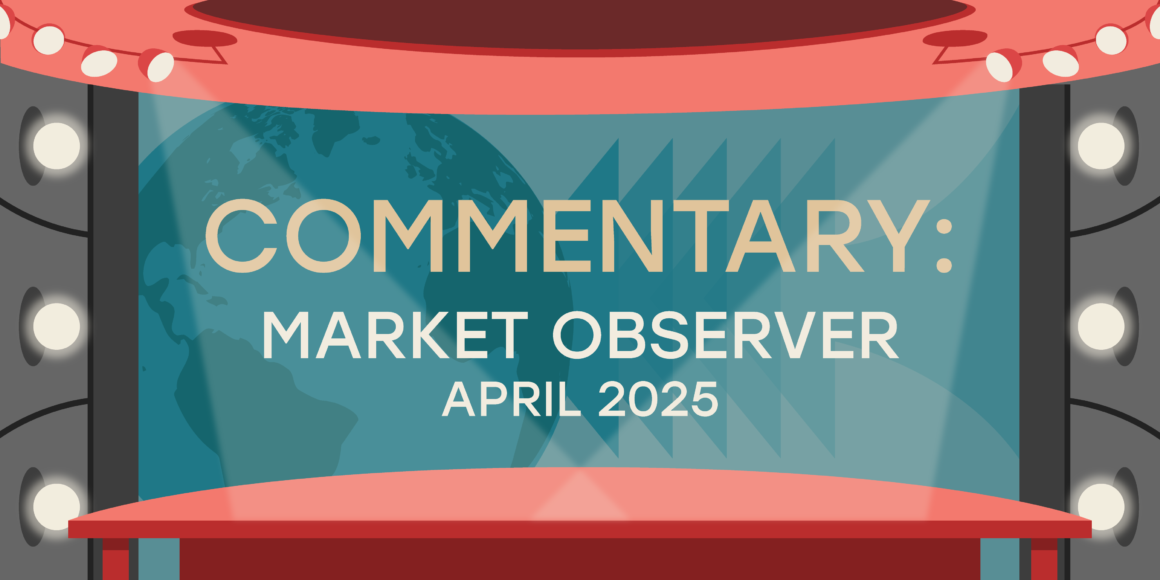While financial markets started the year with record highs, the swift, ongoing, and escalating tariff threats from the U.S. triggered a repricing of risk assets as equities moved into correction territory. The first quarter was nothing if not eventful, with several stock market sell-offs and stocks experiencing their worst start to a year since 2022. And while fixed income initially proved to be a safe haven in the quarter, yields have now changed course and are decidedly higher in both Canada and the U.S.
“Stated explanations for the retreat from the ‘safety’ of bonds have ranged from hedge funds and large institutional investors unwinding positions, to theories of nefarious transactions by foreign governments,” the experts at Canso Investment Counsel Ltd. write in their April 2025 Canso Corporate Bond Newsletter. “Perhaps the simpler answer reflects the prospects for higher inflation and increasing deficits. Either way, fixed income markets are now just barely keeping their heads above water.”
Here’s a snapshot of some of the key movements Canso highlights:
Canada-U.S. government bond spreads
The spread between U.S. and Canadian government bond yields, highlighted by Canso as one of the key surprises of the previous quarter, “continues to persist at historically wide levels.”
This is attributed in part to the relative aggressiveness of the Bank of Canada’s (BoC) interest rate cut decisions compared to the U.S. Federal Reserve (Fed). In Q1, the BoC continued easing, with back-to-back 25 bps rate cuts in January and March, leaving the policy rate at 2.75 per cent. The March move was its seventh consecutive cut before it moved to a “wait and see” posture in April, Canso notes, adding that it “will likely continue to cut before the year is finished.” The Fed has been much more measured in this easing cycle, cutting a total 100 bps compared to Canada at 225 bps over the last year.
“Through most of this year, yields fell as investors found comfort in government bonds through the policy uncertainty,” Canso writes. “The U.S. 10-year (Treasury) eventually crept below four per cent before the fall out from the April 2nd ‘Liberation Day’ announcement. In the aftermath, investors began selling off longer dated U.S. Treasuries sending yields higher.”
As we move through the year, both central banks will have to factor the possibility of stagflation into their rate decisions.
High-yield bond spreads
Spread movements of the U.S. High Yield Index are close to zero on most trading days going back to 1997. However, in the weeks following “Liberation Day,” high yield credit spreads experienced “historically large swings, in both directions” – as the speed of execution on policy priorities has taken many by surprise, Canso says.
“The total scale, breadth and duration of the Trump Tariffs remains uncertain, but the risk of recession is certainly higher than it was, as growth and employment outlooks deteriorate.”
High yield spreads as measured by the U.S. High Yield Index moved 65 bps wider in the first quarter, and “have netted out another 51 bps wider at the time of writing,” Canso says.
“Spreads remain 100 bps inside the historic average of the index and are not yet at crisis-level valuations. The sharp move wider seems to be enduring off the lows given the market uncertainty and trace back to levels last seen at the end of 2023,” Canso explains. “While the market has moved to catch up to increasing default risk and uncertainty, valuations in aggregate are not yet screaming value (but) given how volatile things have been, that could change quickly.”
Investment grade corporate bond spreads
For investment grade corporate bond markets, the credit spread movement has been “relatively muted” compared to the volatility experienced across other markets. In Q1, investment grade spreads widened 13 basis points (bps) in Canada and 15 bps in the U.S.
“Since then, investment grade spreads in the U.S. have widened an additional 16 bps, while the Canadian market has been slower to reprice with just 12 bps of widening across the index,” Canso writes. Spreads are comfortably off the lows and are now hovering around where they were this time last year.”
Within the Canadian investment grade market, the inclusion of Limited Recourse Capital Notes (LRCN) has had a significant impact on this widening. If that’s removed, the Canadian spread would be much more in line with the U.S. market, Canso adds.
Two new issues of note for the quarter were the inaugural issuance of Canadian hybrid securities by both Rogers Communications and Bell Canada. In February, Rogers issued a three-tranche, cross-border hybrid transaction that included C$1 billion and US$2.1 billion of subordinated notes, each due in 2055. Bell Canada followed suit a few days later with a US$2.25 billion deal of the same structure and later followed up with a C$1.25 billion offer in March.
Overall, Canadian investment grade issuers placed $38 billion of newly issued debt into the market in the first quarter of 2025, while U.S. investment grade companies borrowed $500 billion, both in line with 2024 levels, Canso writes.
In speculative grade markets, levered loan issuance remained strong, rising eight per cent to $355 billion (boosted by interest in Collateralized Loan Obligations, or CLOs), while high yield bond issuance declined 20 per cent to $68 billion.
For a deeper dive into the corporate bond market, read the full analysis in the April 2025 Canso Corporate Bond Newsletter.
To learn more about the overall state of the market, check out the April 2025 Canso Market Observer.
DISCLAIMER: The views and information expressed in this publication are for informational purposes only. Information in this publication is not intended to constitute legal, tax, securities or investment advice and is made available on an “as is” basis. Information in this presentation is subject to change without notice and Canso Investment Counsel Ltd. does not assume any duty to update any information herein. Certain information in this publication has been derived or obtained from sources believed to be trustworthy and/or reliable. Canso Investment Counsel Ltd. does not assume responsibility for the accuracy, currency, reliability or correctness of any such information.






